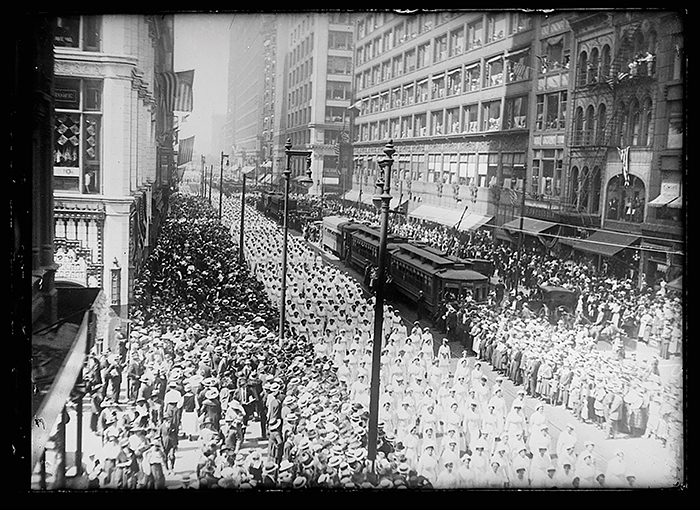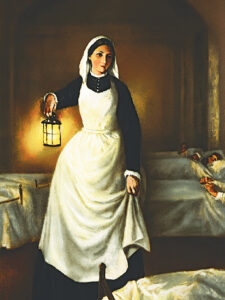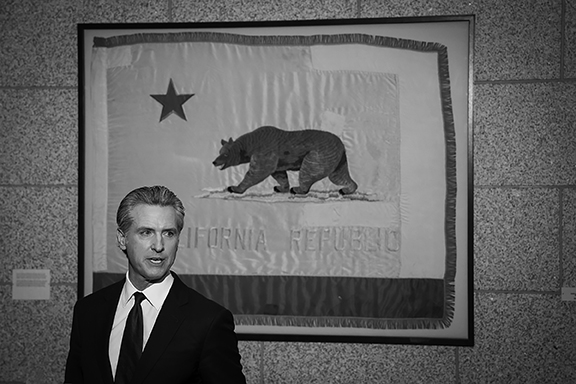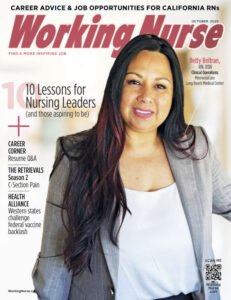Feature
Nurses Day and Nurses Week
Some historical highlights from 75 years of celebrations

NATIONAL NURSES WEEK has been an annual tradition for longer than many current nurses have been practicing, but it’s only the latest in a long line of nursing- related observances. Here are some things you might not know about nursing celebrations past.
Everybody Loves a Parade
There have been local Nurses Day or Nurses Week observances in some places for at least a century. In Chicago, nurses even got a parade! Chicago’s annual Nurses Day, organized in 1949 by Clarence M. Brissette, director of the Catholic church Sorrowful Mother Novena, honored nurses with floats and marching bands.
Intended as a recruiting tool as a well as a celebration, the first parade was held on June 15, 1949. Because the nursing shortage it originally addressed had eased by the late ‘50s, the event was discontinued after 1958. The final gala was a blockbuster. It drew 100,000 spectators to watch more than 100 floats, dozens of bands, and more than 4,000 uniformed marching nurses from Chicagoland hospitals.
 Celebrating Nightingale
Celebrating Nightingale
Many nursing holidays revolve around Florence Nightingale. The first National Nurse Week (note the singular) commemorated not her birth, but rather the 100th anniversary of her historic Crimean War mission in 1854. (For more on this consequential undertaking, look for the feature “Nightingale in Crimea” at WorkingNurse.com.)
In a 1953 letter to President Eisenhower, Dorothy Sutherland of the U.S. Public Health Service (PHS) Division of Nursing Resources, proposed the first Nightingale observance. The following year, the proposal was introduced in Congress and passed with the strong support of the PHS and ANA.
President Eisenhower proclaimed the week of Oct. 10–16, 1954, as National Nurse Week. Eisenhower noted that “a continuing renewal and extension of the ranks of nurses, through the attraction of young people to the nursing profession, is of grave importance to the Nation’s future well-being.”
In 1965, the International Council of Nurses (ICN) declared Florence Nightingale’s birthday, May 12, to be International Nurses Day, which it remains today.
Since 1971, the ICN has chosen a theme for each year’s observance: The initial theme was “Unity,” while the 2024 theme is “Our Nurses. Our Future. The economic power of care,” which ICN President Pamela Cipriano, RN, Ph.D., NEA-BC, FAAN, says is intended to “demonstrate how strategic investment in nursing can bring considerable economic and societal benefits.”
National Nurse Week, Take Two
Eisenhower’s 1954 National Nurse Week was a one-time event, but over the years there were periodic calls for it to be repeated. In November 1973, Congress authorized President Nixon to designate Feb. 10–16, 1974, as another National Nurse Week.
The president acknowledged “the complex and expanding role which nurses play in our health care system,” noting the profession’s growing sophistication and specialization, and the increasingly important role nurses played outside the hospital setting — including as primary care nurse practitioners.
Houdini’s Neighbor & the Man the Mob Couldn’t Buy
Before National Nurses Week became an annual tradition, there was a grassroots campaign to establish an annual Nurses Day. This campaign was the brainchild not of any professional organization, but rather of a retired New Jersey banking executive, Edwin L. Scanlan.
As a boy, Scanlan had been Harry Houdini’s next-door neighbor in Flatbush. In later years, he became an amateur magician himself, frequently performing for hospital pediatric patients.
During those performances, Scanlan was consistently impressed by the dedication of the nurses he met, and he eventually “began wondering what I could do for them.” Scanlan selected May 6 as an appropriate day of recognition, marking the beginning of the week leading up to Florence Nightingale’s birthday and International Nurses Day.
As a New Jerseyean, Scanlan petitioned his state’s governor, Brendan T. Byrne — famously known as “the man the mob couldn’t buy” after an FBI wiretap overheard mobsters complaining about his incorruptibility — to proclaim May 6, 1978, as New Jersey’s first Nurses’ Day.
A few years later, the New Mexico Nurses Association persuaded Rep. Manuel Lujan Jr. to ask President Reagan to designate May 6, 1982, as National Recognition Day for Nurses. Reagan issued his proclamation, lauding nurses’ knowledge and skills as well as their “special compassion and concern.”
Although the resolution was again to be a one-time event, in February 1982, the ANA Board of Directors declared May 6 as National Nurses Day. While this wasn’t a federally recognized observance, it was widely observed by hospitals and nursing organizations throughout the U.S.
From a Day to a Week
Beginning in the early ‘80s, there was a push among nursing organizations to expand the celebration of Florence Nightingale’s birthday to a full week, sometimes known as International Nurses Week.
In the U.S., National Nurses Week was initially celebrated during the first week of May. In Canada, the Canadian Nurses Association petitioned the government to proclaim the week including Nightingale’s birthday as National Nurses Week.
In the early ‘90s, the ANA Board of Directors decided that the dates of the U.S. National Nurses Week should be fixed as May 6–12 each year. Today, this week encompasses several distinct observances: May 6 is National RN Recognition Day; May 8 is National Student Nurses Day; and Nightingale’s birthday, on May 12, remains International Nurses Day.
AARON SEVERSON is the associate editor of Working Nurse.
In this Article: Historical Nurses, Nurses Week






